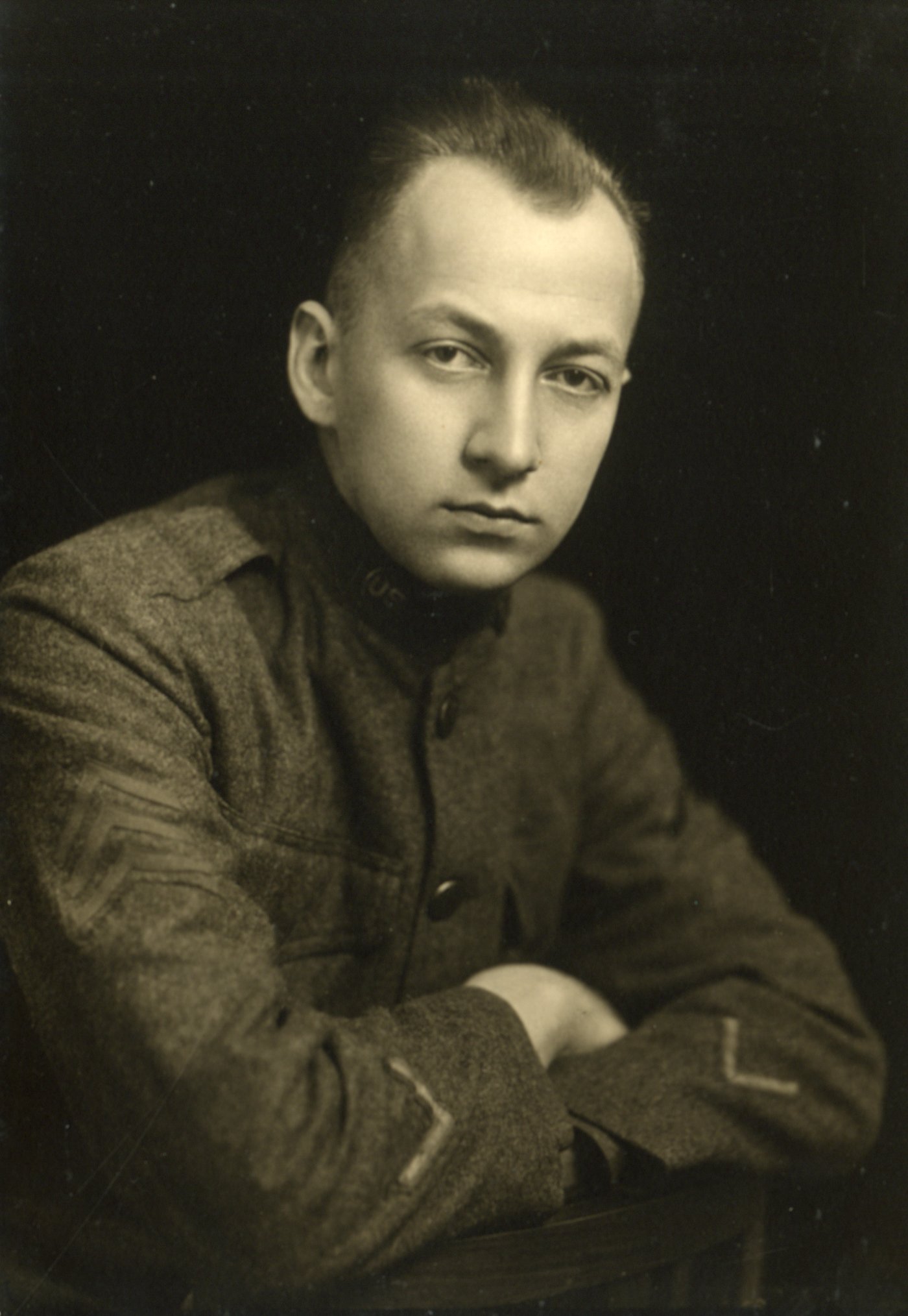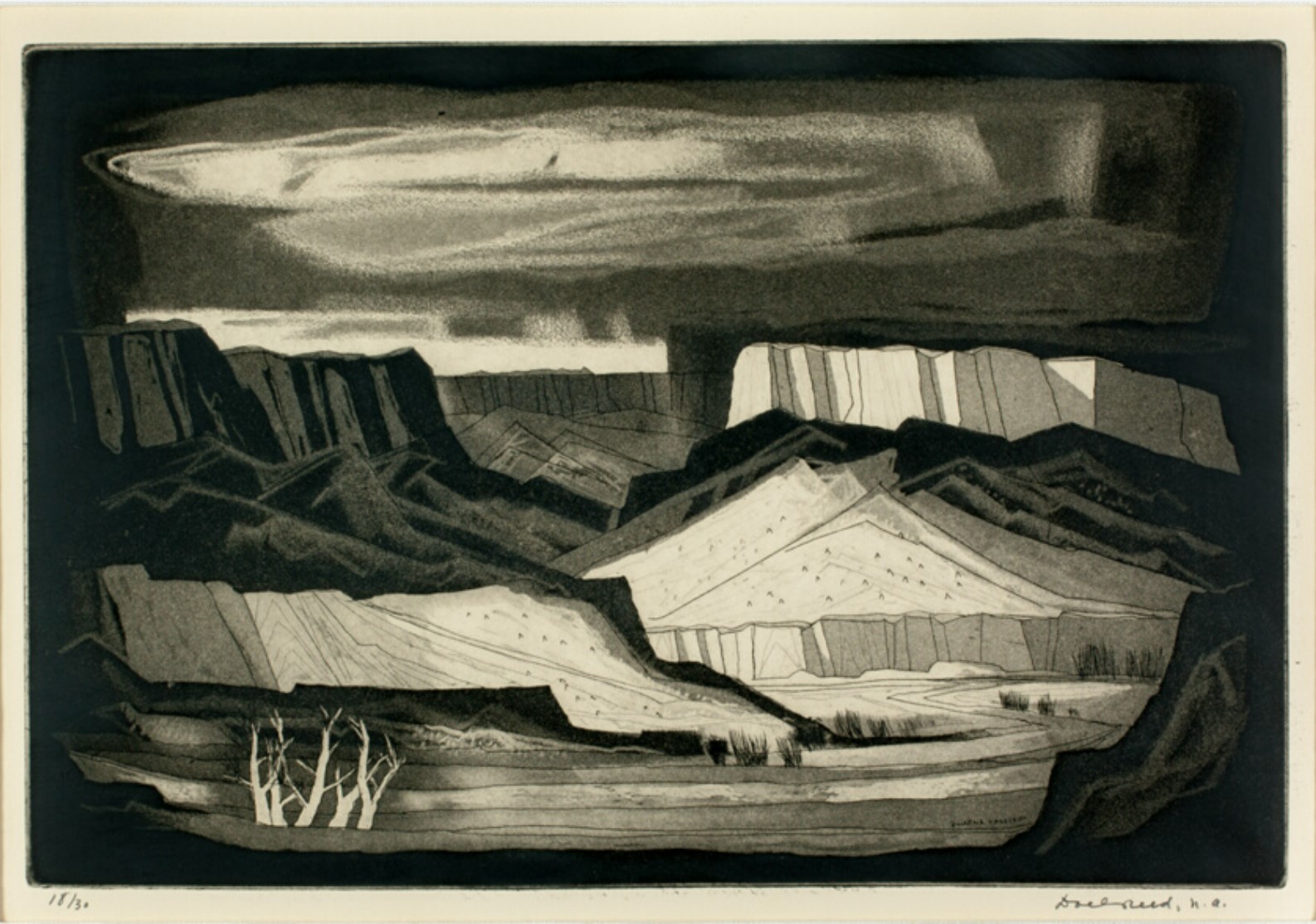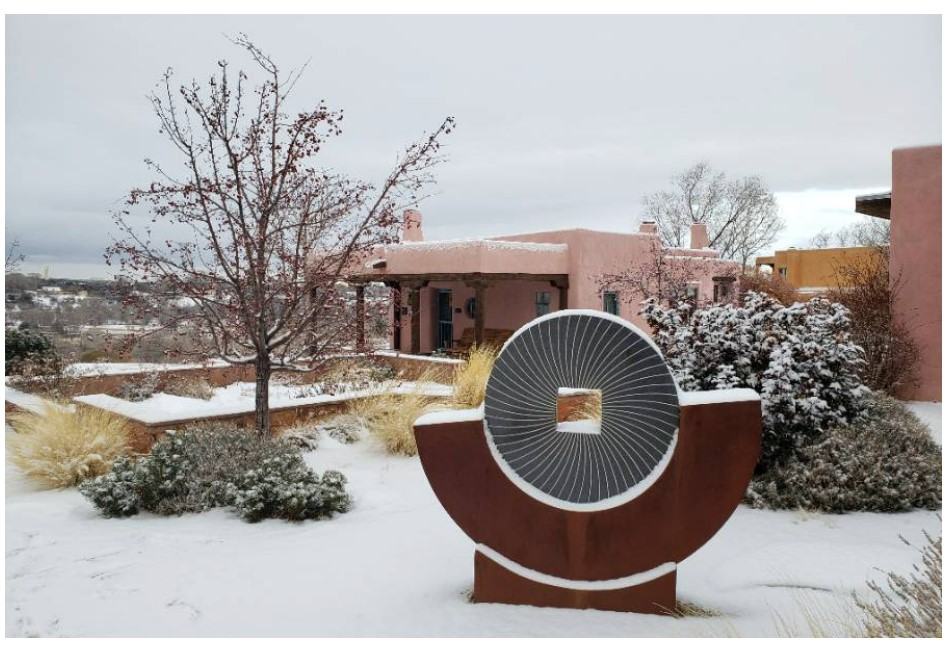Dispatch from Taos
Sun Patterns, Dark Canyon: The Paintings and Aquatints of Doel Reed

By Lenore Macdonald
One of the most important but somewhat understudied printmakers creating art in Taos was Doel Reed. He is, at long last, getting the recognition that he deserves. Opened at the Taos Art Museum on June 7, Sun Patterns, Dark Canyon: The Paintings and Aquatints of Doel Reed explore the art and career of the highly successful twentieth-century American printmaker and painter Doel Reed (1894-1985). He is best known today as a Southwestern artist and “master of the aquatint.”

Sun Patterns, Dark Canyon Doel Reed, Sun Patterns, Dark Canyon, 1979 Aquatint and etching on paper, 7 7/8 x 17 ½ inches. Oklahoma State University Museum of Art, Stillwater, OK
Reed was–like many artists who ended up in Taos–born in the Midwest. Born on May 21, 1894, near Logansport, Indiana, he would achieve an international reputation as a landscape artist and printmaker and was called a master of aquatint. In youth, he attended art classes at the John Herron Art Museum in Indianapolis and developed a lifelong interest in artwork featuring the human figure. Graduating from high school in 1912, he served as an apprentice architect for four years. This exposure to architectural drawing was later shown in his detailed depictions of buildings and structures.

Doel Reed creating an aquatint in his studio. Photo courtesy of Oklahoma State University.
In 1916 Reed began studying at the Art Academy of Cincinnati. The first art school west of the Allegheny Mountains, the school stressed a classical education concentrating on principles of drawing and painting. Among its prominent faculty was Joseph Henry Sharp. Sharp was a founder of the Taos Society of Artists. See How A Broken Wagon Wheel Changed the Course of Art History by Lenore Macdonald, Published by Classic Chicago Magazine, September 8, 2019.
His education was interrupted by service in World War I with the Forty-seventh Infantry in France, exposing him to mustard gas and leaving him with temporary blindness and permanent lung damage.

Doel Reed in his Army Uniform, 1918 – from Oklahoma State University photo archive
Reed rejoined the Academy in 1919 after the war, subsequently joining the faculty at Oklahoma A&M (now Oklahoma State University) in 1924. The college gave him great latitude. He had long and productive over 30-year career there as professor of art and was recognized as a dedicated and inspirational teacher.
In the 1930s, Reed became a master printmaker, lecturing widely on the aquatint technique. Like many other Depression-era artists, he embraced Regionalism, which favored rural and Midwestern subjects. By the end of the 1940s, Reed enjoyed a national reputation and had developed his signature style, a conservative modernism characterized by geometric abstraction, dramatic use of lights and darks, and a focus on emotional impact. Reed began summering in Taos, with its thriving artists’ colony, starting in the mid-1940s and permanently moved to New Mexico in 1959. The mountainous topography, geology, and history of New Mexico were an endless source of inspiration to Reed. This retrospective exhibition highlights his prints, paintings, and drawings from the 1920s to the 1970s.

Doel Reed, The Southwest, 1940, aquatint, Smithsonian American Art Museum, Gift of Chicago Society of Etchers, 1941.6.32
Sun Patterns – Dark Canyon brings attention to this significant but understudied artist and demonstrates how Reed influenced and contributed to national and international artistic trends over his long and prolific career. Included in the exhibition are over 60 works of art by Doel Reed and his contemporaries. His personal items, such as his diary from World War l and examples of his aquatint plates, are also included. An exhibition catalog will be available. Sun Patterns – Dark Canyon will close on August 28, 2022. For more information, visit the Taos Art Museum at https://www.taosartmuseum.org/

Evening Storm Doel Reed, Evening Storm, 1949, etching and aquatint on paper, 7 1/2 x 10 13/16 inches. Oklahoma State University Museum of Art, Stillwater, OK Gift of Bob Parks
Sun Patterns—Dark Canyons: The Paintings and Aquatints of Doel Reed is organized by the Oklahoma State University in Stillwater, Oklahoma. The exhibition was curated by Dr. Rebecca Brienen. Funding for this exhibition has been provided by Kent and Jeanette Young, the Doel Reed Center, Neal and Lora Buck, and the Vaughn Vennerberg II Endowed Chair Fund in Art. The accompanying catalogue is funded by the Terra Foundation for American Art and the Carl and Marilynn Thoma Family Foundation.

Doel Reed, Rio Grande, 1971, Aquatint with etching in black on off-white wove paper, partially discolored to cream, Art Institute of Chicago, Gift of J. Barlow Nelson, Reference Number 2015.399
Finally, the Doel Reed Center in Taos is an educational site that extends Oklahoma State University’s reach to culturally rich northern New Mexico. Located in the former home and studio of Doel Reed, founding chair of OSU’s’s art department, the Center is a hub for creativity in teaching, research and outreach. Donated to OSU by Martha Reed,Doel’s daughter, the Center is fulfilling her vision of a thriving educational community that is befitting of her father’s work and legacy. Visit https://doelreed.okstate.edu/ for more information.

The Doel Reed Center in Taos, photo courtesy of Oklahoma State University, https://doelreed.okstate.edu/
©2022 Lenore Macdonald. All rights reserved.
Photos courtesy of The Oklahoma State University and the Taos Art Museum





